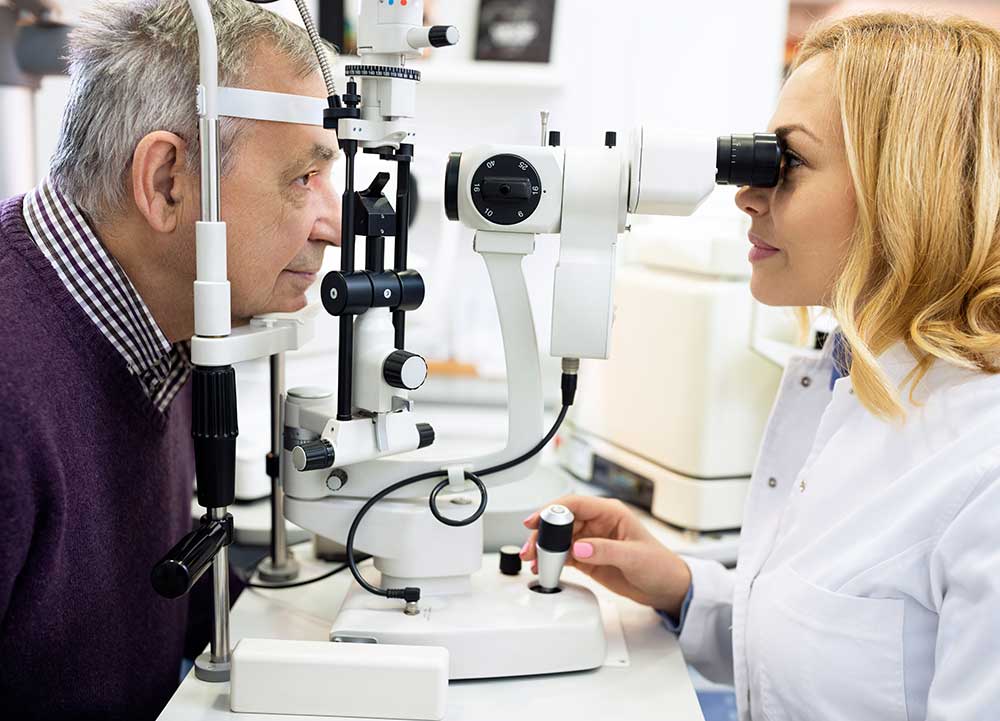Checking Out the most recent Technical Advancements in Optometry and What They Mean for Optometrists
From the accuracy of Optical Comprehensibility Tomography to the nuanced understandings provided by AI-driven analysis devices, these developments are setting new criteria in person analysis and therapy. As these developments permeate the method, eye doctors are faced with the difficulty of welcoming these tools to improve patient end results.
Developments in Diagnostic Equipment
Advancing the field of optometry, developments in diagnostic tools have actually reinvented the method eye treatment specialists analyze and detect ocular problems and visual disabilities. The past decade has observed significant technological advancements, allowing more precise and thorough assessments.
An additional key technology is the intro of innovative corneal topography systems, which map the surface area curvature of the cornea with accuracy. These tools are particularly advantageous for suitable contact lenses and identifying corneal conditions. Electronic retinal imaging has actually changed standard ophthalmoscopy, providing in-depth, breathtaking views of the retina that facilitate comprehensive visual exams.
The growth of wavefront aberrometry has actually also been essential, allowing the evaluation of refractive errors with unequaled precision (Eye Doctor Optometrist). This innovation helps in customizing rehabilitative lenses and enhancing medical outcomes for refractive surgical procedures. Collectively, these analysis developments empower optometrists to supply premium individual treatment, making sure very early treatment and tailored therapy strategies, eventually improving visual health results
AI in Individual Monitoring
Building on the foundation of advanced analysis tools, the consolidation of synthetic intelligence (AI) in client monitoring represents a transformative jump for optometry. AI systems are progressively employed to improve effectiveness, precision, and personalization in patient care.
In addition, AI-driven systems help with structured patient communications and administrative procedures. Automated organizing, digital appointments, and personalized follow-up plans not only enhance client complete satisfaction however likewise maximize time management for experts. These systems can triage clients based on the necessity of their problems, guaranteeing that those in important demand receive punctual focus.
In addition, AI enhances decision-making by providing optometrists with evidence-based referrals and therapy pathways. By integrating data from electronic health documents, AI devices offer understandings that notify professional choices, reducing the risk of mistakes and enhancing client end results. As AI continues to evolve, its duty in individual monitoring will likely broaden, improving the landscape of optometric treatment.
Advances in Retinal Imaging
In the world of optometry, retinal imaging has experienced remarkable technical developments that are enhancing analysis capacities and individual treatment. Innovations such as Optical Coherence Tomography (OCT) and fundus photography have actually changed how optometrists analyze the retina and picture. OCT, particularly, supplies high-resolution, cross-sectional pictures of the retina, allowing for the detailed evaluation of its layers. This ability is vital for very early detection and monitoring of conditions like glaucoma, diabetic person retinopathy, and age-related macular deterioration.
Boosted imaging methods like OCT angiography are additional refining diagnostic accuracy. Eye Doctor Optometrist. Such developments help with the recognition of minute retinal modifications that could signify disease progression.
In addition, developments in fabricated knowledge are enhancing retinal imaging by allowing automatic analysis of huge datasets. These systems assist optometrists in identifying patterns a measure of pathology, thereby boosting diagnostic accuracy and efficiency. Collectively, these advancements are changing retinal imaging right into a keystone of modern-day eye treatment, enhancing end results and broadening therapeutic opportunities.
Teleoptometry's Growing Role
Teleoptometry is increasingly coming to be a vital element of eye treatment, driven by innovations in electronic interaction and diagnostic tools. This is particularly helpful in underserved and country areas where accessibility to specialized eye treatment is usually minimal.
The integration of man-made knowledge (AI) additional enhances teleoptometry, allowing the analysis of aesthetic data and assisting in the discovery of ocular conditions such as glaucoma and diabetic person retinopathy. AI-powered algorithms can rapidly translate complex imaging information, providing eye doctors with beneficial understandings that bolster medical decision-making.
Furthermore, use this link teleoptometry sustains continuity of care through smooth assimilation with digital health documents (EHRs), enabling eye doctors to preserve comprehensive client backgrounds. This makes sure that people obtain consistent and personalized care also when seeking advice from different experts.
Regardless of these advantages, obstacles continue to be, including making sure data security and handling individual assumptions. However, teleoptometry represents a considerable stride in the direction of more accessible, reliable, and patient-centered eye treatment. As technology progresses, its role is positioned to increase even more.

Future Fads in Eye Care
A myriad of cutting-edge fads is readied to reshape the future of eye treatment, driven by technical improvements and the advancing needs of people. One considerable trend is the assimilation of man-made intelligence (AI) in diagnostics, which assures to enhance the accuracy and performance of eye exams. AI formulas can evaluate large quantities of information from retinal images, potentially detecting conditions like diabetic retinopathy and glaucoma earlier than standard techniques.
Moreover, personalized medication is getting grip in optometry, with hereditary testing educating customized treatment strategies. This technique aims to enhance individual end results by customizing treatments to private genetic profiles. Wearable innovation, such as smart contact lenses, is also imminent, providing real-time surveillance of intraocular pressure or glucose degrees, thus giving constant insights right into systemic and eye health and wellness.
The fostering of augmented truth (AR) and digital fact (VR) in training and person education is another emerging fad. These innovations provide immersive experiences that can boost understanding and abilities both for optometrists and clients. As these fads develop, optometrists must stay abreast of technical advancements to offer innovative treatment, guaranteeing improved see here individual results and fulfillment in the dynamic landscape of eye treatment.
Verdict

Collectively, these diagnostic developments equip eye doctors to deliver superior patient care, ensuring early treatment and customized therapy strategies, eventually improving aesthetic health and wellness outcomes.

As these technologies continue to progress, eye doctors should adjust and include them right into practice, eventually optimizing workflow performance and elevating the requirement of eye treatment provided to clients.